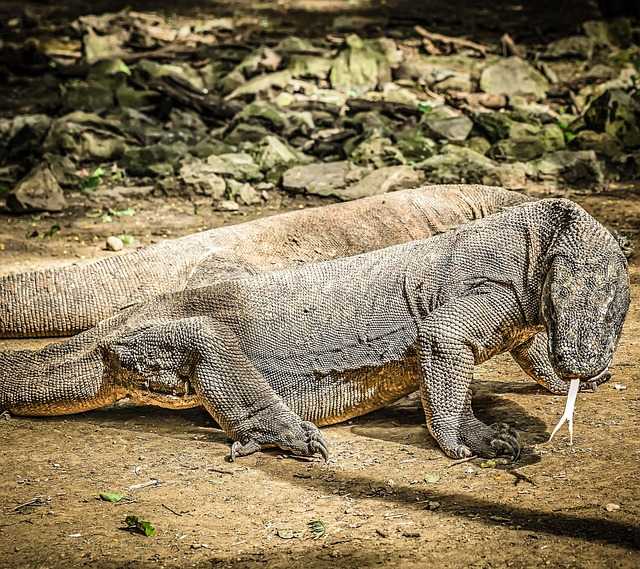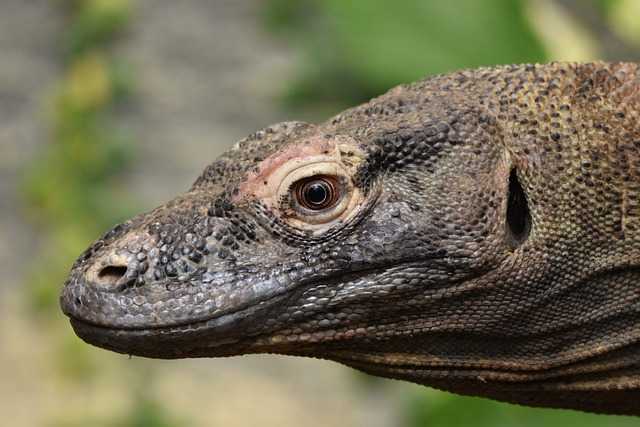The Komodo dragon, also known as the Komodo monitor, is a member of the monitor lizard family Varanidae that is endemic to the Indonesian islands of Komodo, Rinca, Flores, and Gili Motang. It is the largest extant species of lizard, growing to a maximum length of 3 metres, and weighing up to 70 kilograms.
Speed: 20 km/h (Maximum, On Land, Sprint)
Mass: 79 – 91 kg (Male, Adult), 68 – 73 kg (Female, Adult)
Scientific name: Varanus komodoensis
Length: 2.6 m (Male, Adult), 2.3 m (Female, Adult)
Clutch size: 20
Family: Varanidae
Kingdom: Animalia

List of facts
The Komodo dragon latin name is Varanus komodoensis
It also known as the Komodo monitor
To the natives of Komodo Island, it is referred to as ora, buaya darat (‘land crocodile’), or biawak raksasa (‘giant monitor’)
The Komodo dragon is a member of the monitor lizard family Varanidae
The Komodo Dragon is found on the Indonesian islands of Komodo, Rinca, Flores, and Gili Motang.
It is the largest extant species of lizard, growing to a maximum length of 3 metres , and weighing up to 70 kilograms.
Komodo dragons hunt and ambush prey including invertebrates, birds, and mammals.
The diet of Komodo dragons mainly consists of Javan rusa , though they also eat considerable amounts of carrion.
Komodo dragons also occasionally attack humans.
The eggs are incubated for seven to eight months, hatching in April.
Young Komodo dragons are vulnerable and dwell in trees to avoid predators, such as cannibalistic adults.
They take 8 to 9 years to mature
Komodo dragons are estimated to live up to 30 years.
Komodo dragons were first documented by Europeans in 1910
The first two live Komodo dragons to arrive in Europe were exhibited in the Reptile House at London Zoo when it opened in 1927

an average adult male will weigh 79 to 91 kg (174 to 201 lb) and measure 2.59 m (8.5 ft)
an average female will weigh 68 to 73 kg (150 to 161 lb) and measure 2.29 m (7.5 ft)
The largest verified specimen in captivity was 3.13 m (10.3 ft) long and weighed 166 kg (366 lb)
The Komodo dragon has a tail as long as its body
The Komodo dragon has about 60 frequently replaced, serrated teeth that can measure up to 2.5 cm in length
It also has a long, yellow, deeply forked tongue
The Komodo dragon can see objects as far away as 300 m
The Komodo dragon primarily relies on its tongue to detect, taste, and smell stimuli
a Komodo dragon may be able to detect carrion from 4–9.5 km (2.5–5.9 mi) away
Komodo dragons are solitary, coming together only to breed and eat.
They are capable of running rapidly in brief sprints up to 20 km/h
the Komodo dragon digs holes that can measure from 1 to 3 m
the Komodo dragon may stand on its hind legs and use its tail as a support
They Komodo dragon is an Excellent Swimmer
